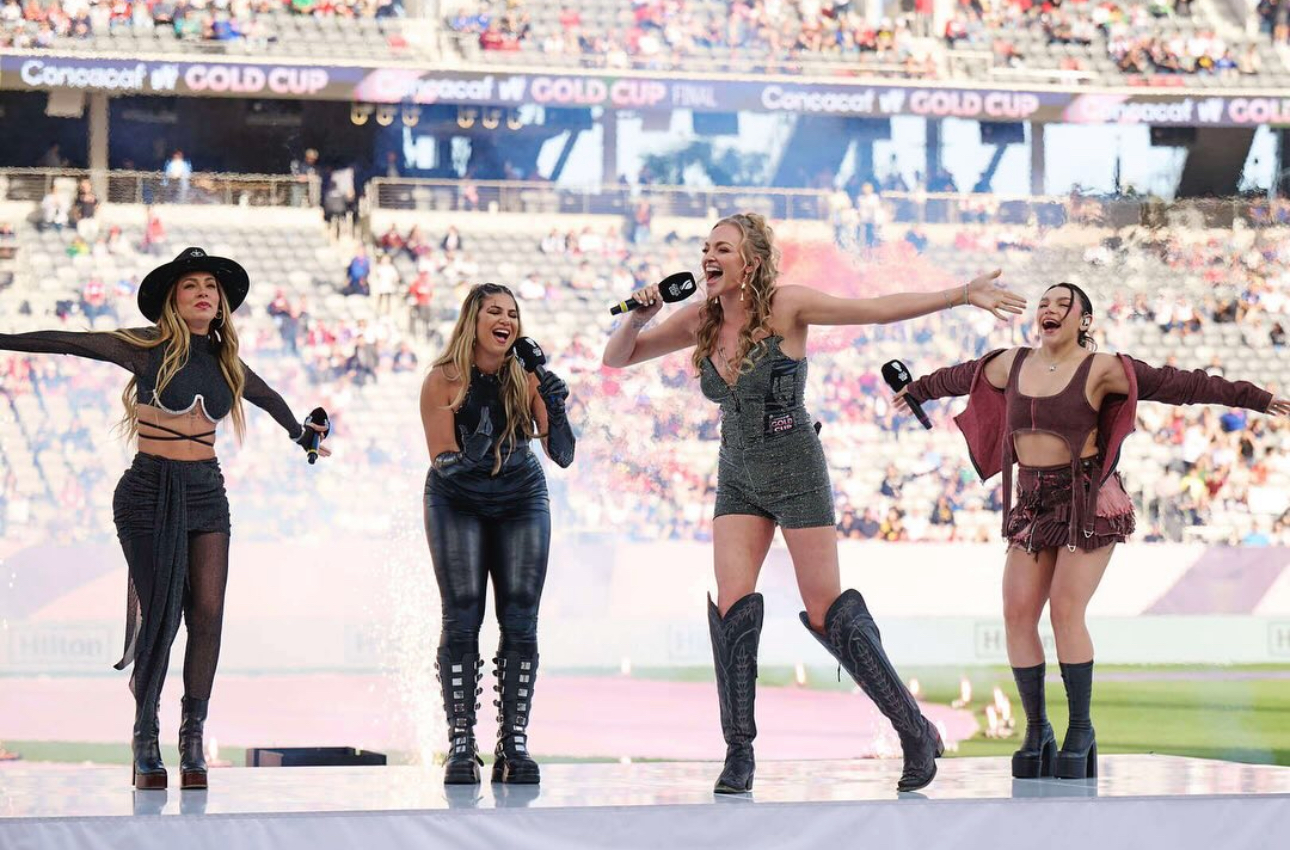Insights | July 30, 2024
How Music Shapes The Modern Sports Experience From Anthem To Atmosphere
Imagine it’s game day. You approach the stadium filled with anticipation as you and many other like-minded supporters funnel through the gates like a stream approaching a waterfall, ready to scream and cheer your team to victory. Once in your seat, the energy in the air continues to build until the bass drops and your team’s song blasts through the speakers, igniting the audience with a wave of excitement that sets the stage for the upcoming game. This isn’t just a sports event—it’s a full-fledged entertainment experience. Welcome to the modern era of live sports, where music plays an integral role in creating unforgettable moments for fans.
In the past, attending a sports event primarily meant watching the game and cheering for your favorite team. Sure there was hype in announcing the starting lineup where teams typically adopted a song as their anthem like the Chicago Bulls did with The Alan Parsons Project’s “Sirius.” But today, it’s a multi-sensory experience designed to engage and entertain from the moment fans step through the gates until after the final whistle blows. That’s because only 23% of Gen Z define themselves as passionate sports fans, compared to 42% of Millennials, according to a 2021 study. But Gen Zers are into music more than the overall population, listening to it nearly four hours each day. That makes music a bridge to the next generation of sports fans and a cornerstone of this modern-day transformation, enhancing the atmosphere and heightening the emotional connection between the audience and the event. ESPN further illustrates how music and sports are intertwined with the upcoming documentary, Rhythm Masters—a unique film done by Grateful Dead drummer Mickey Hart that explores the rhythmic connection between music and sports.
In this era of short attention spans, game-day planners need a way to keep fans engaged, so they strategically utilize music throughout live sports events. From the high-energy anthems that play during team entrances to the pulse-pounding beats that accompany crucial moments in the game, music amplifies the intensity and excitement. Event planners and sports marketers understand that the right soundtrack can turn a mundane moment into a memorable one.
Many sports organizations have embraced this trend. The NFL, for example, invests heavily in halftime shows, spending an average of $13 million each year—but it wasn’t always like that. The first Super Bowl halftime show took place in 1967 and featured the University of Arizona and Grambling State University bands. Today’s halftime shows have transformed the Super Bowl into a global entertainment spectacle that includes anticipation of who will be announced to perform and widespread reviews that follow. For example, G7’s Danielle Kates wrote a review for BizBash on last year’s halftime show with Usher.
A sport like rodeo even utilizes music for its competitions. When the National Finals Rodeo (NFR), known as the super bowl of rodeo, needed music for its event, G7 curated and licensed Aaron Watson’s “Dark Horse” for the CBS Sports NFR broadcast that was sponsored by Ram. The song was an integral part of the broadcast’s promos, intros, outros, and recaps, and helped uplift the event for the network, the sponsor, and the artist.
NBA games also often feature live performances during timeouts and intermissions, ensuring that the energy never wanes. Motor sports are also expanding their fan experience with live music. The NASCAR Chicago Street Race, which was named Sports Event of the Year, occurred earlier this month and included two nights of concerts, in addition to the race, with performances by Keith Urban, The Black Keys, Lauren Alaina, and The Chainsmokers. G7 was at the event with Liquid Death where we created a multi-footprint activation to promote the brand becoming the Official Iced Tea of NASCAR. The activation’s main attraction was the Liquid Death Can Zone, a 40’x40’ space that resembled an actual NASCAR team’s footprint, which provided an authentic and entertaining way to build brand awareness with race fans. The space was fully branded with flags, a truss supported entrance sign, and a 44’ vehicle trailer with a marquee sign. Fans could sample iced tea, meet Murder Man, spin a custom prize wheel for swag, see the infamous Thirst Hearse wrapped as a race car.
Major sports tournaments often take place in multiple cities over multiple days, so they utilize music to provide an identity throughout the entire competition. The NCAA basketball tournament, known as March Madness, has been using the same theme song, “One Shining Moment,” since 1986. More recently, the international soccer tournament, Copa America, used Pitbull’s “Superstar” as its theme song and even borrowed a page from the NFL by creating a large halftime show during the final game that featured Shakira.
Earlier this year, Concacaf was looking for a theme song with Latin roots for their Women’s Gold Cup, so they reached out to G7 for help. We identified up-and-coming artist Alexis Gomez to become the voice of the tournament, and within three weeks she had penned the anthemic “Vamos” that G7 executive produced, navigating recordings in Nashville and mixing in Bogota, Colombia. The track not only blew Concacaf execs away, but record label titan Universal Music Group was also impressed as they licensed the song, added a few of their artists to the master, created a music video, and distributed the track internationally.
The evolution of live sports into entertainment extravaganzas is a testament to the power of music in shaping memorable experiences. As fans increasingly seek more than just a game, the integration of music offers a dynamic way to meet their expectations and keep them coming back for more.
